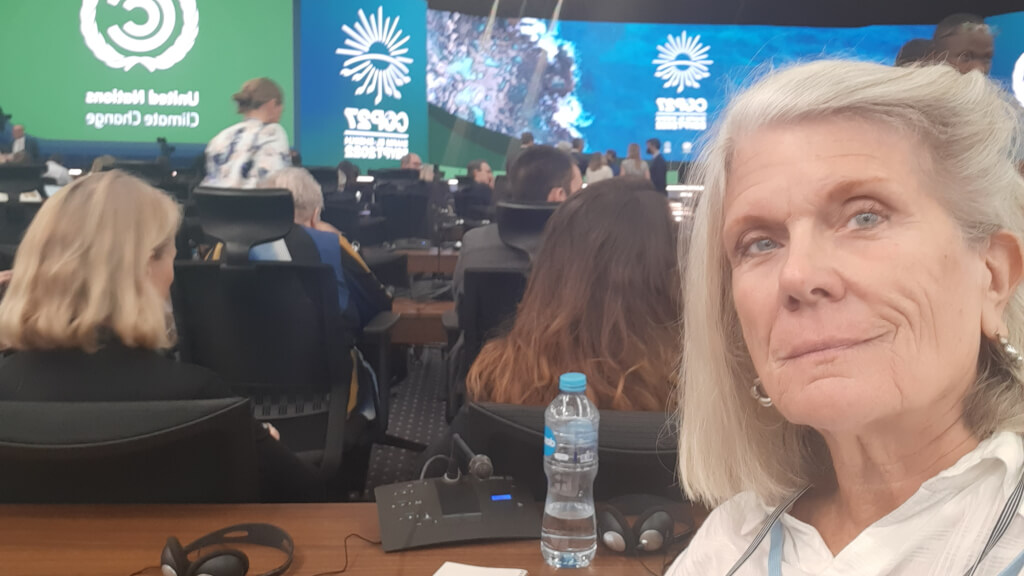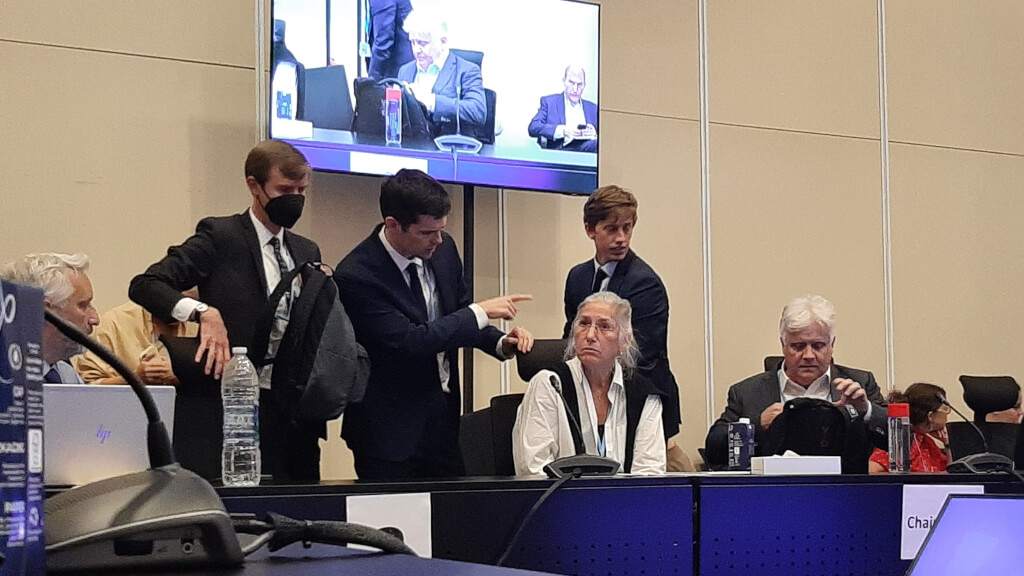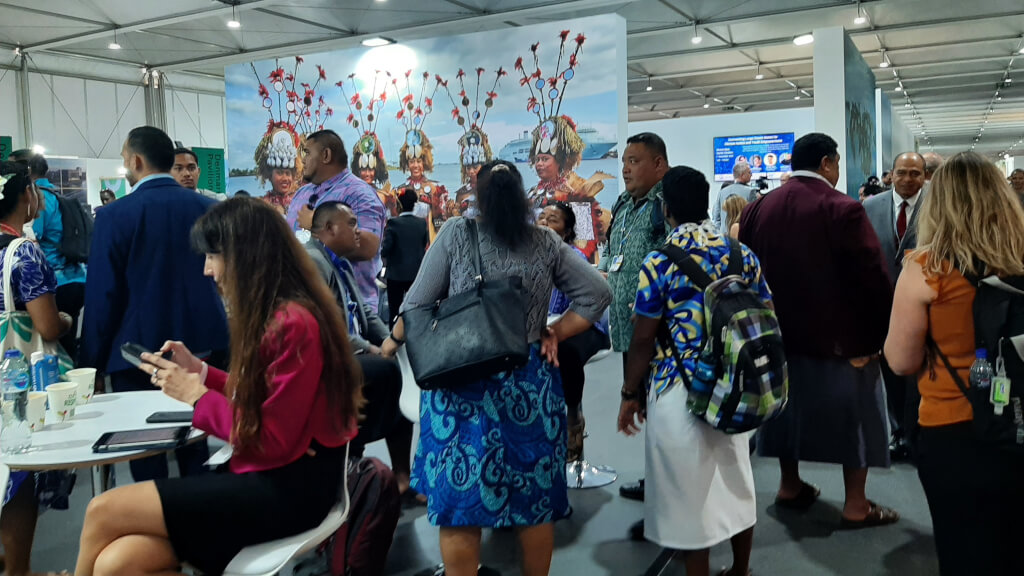The meeting of the Conference of the Parties to the United Nations Framework Convention on Climate Change (COP) is held yearly for two weeks. It is a multi-level event and the culmination of a year’s work by hundreds of thousands of people; about 30,000 representatives attended the 27th meeting in November 2022 (COP 27).COP 27 was held in the Egyptian coastal city of Sharm el-Sheikh.
The Blue Zone, the high-security area requiring a badge to enter, was comprised of four enormous buildings with confusing signage, where high levels of state negotiated the big issues and set the goals for the next year. Scientists, businesses, faith groups, and other special interests contribute to those negotiations. The less-restricted Green Zone for NGOs, where events, exhibits and workshops took place, was difficult to navigate; a bus trip from the main venue. COP veterans reported that the Green Zone here paled in comparison with other COPs and that the police state of Egypt had successfully shut down voices of historical protests.
My COP entrance felt like I was back to my days working for “big business” at huge trade shows. Pavilions sponsored a myriad of topical focuses: food security, infrastructure, health and medical care, transportation, agricultural waste, energy grids, and on and on. They were flashy; people there had an agenda. Still, I attended informative presentations at several pavilions and made contacts at each, including the pavilions for Indigenous Peoples, Denmark, Oceans, Moana Blue Pacific, and Children and Youth.
The highly touted theme of COP 27 was “Implementation,” with cries for action rather than more talk. The ‘toe in the water’ Loss and Damage Fund was finally approved in theory – 15 years after it was first broached in Bali in 2007.
There was an acknowledgment that COP has evolved to a complexity that is unwieldy and that it needs restructuring to address the urgent issues we are facing.
Most country pledges and agreements are not binding. And, in a country like the US, which is responsible for one quarter of all historical global emissions, the executive powers are not enough to commit the country.



However, debriefings were positive and showed the immense power of COP at the high political levels:
-
Initiatives and alliances that had been worked on for months were solidified at COP. Significant pledges like the Methane Pledge were signed by 150 countries, but it was noted that if India and China didn’t sign on, the limit of a 1.5-degree Celsius temperature rise was hopeless. I was disappointed that the non-proliferation of fossil fuels treaty did not push forward, but methane is a huge issue.
-
Ghana and the US are co-chairing the Forest and Climate Leadership, which launched at COP 27 to address deforestation and ways to maintain healthy forests and protect carbon land sinks. Brazil’s new leadership will be an enormous boost.
-
Just Energy Transition Partnerships (JETPs) are increasing. Following an agreement made in Glasgow, the EU and the US have begun partnerships with Indonesia, Vietnam, Egypt, and Mexico. The focus is on renewables, reducing coal production, and limiting emissions with public and private investment. There is a big push to regulate oil and gas flares and venting.
-
The International Drought Resilience Alliance was launched by Senegal and Spain and will be furthered at the Water Conference in March.
These highlights are encouraging, but slow. By 2050, projections are for 1.2 billion people to be forced from their land due to climate change. The increasing climate crisis put pressure on COP 27 and the subsequent UN Biodiversity Conference in December to advance global cooperation and action. It was a glimmer of hope for the future.
